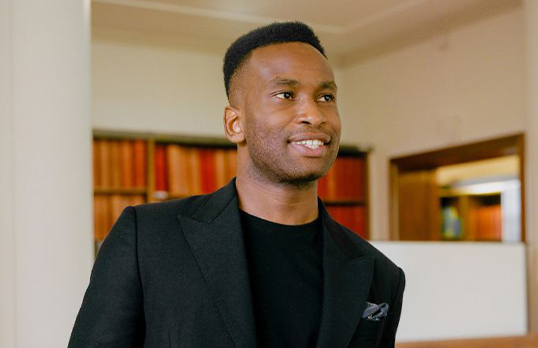The Royal Institute of British Architects (RIBA) has published the latest Future Trends survey results, a monthly report of the business and employment trends affecting the architects’ profession.
In April, the RIBA Future Trends Workload Index fell by 14 points to a balance figure of +5. In the next three months, 23% of practices expect workloads to increase, 18% expect them to decrease and 59% expect them to remain the same.
Of the four sectors, three experienced a confidence dip, with just two remaining in positive territory. The commercial sector posted a slightly reduced balance figure of +3; the private housing sector posted a figure of +7 (down 10 points from March, and 35 points over the last 12 months); the public sector fell into negative territory for the first time since August 2021 with a balance figure of -3; and the community sector remained at -2.
Whilst practices of all sizes still expect workloads to increase, the extent of this optimism has dropped across the board. Small practices (1-10 staff) posted a positive balance figure of +3, a reduction of 13 points, and large and medium-sized practices (11+ staff) returned a balance figure of +19, down from +36 in March.
While the South of England was the only region to move into negative territory – dropping 25 points from +15 to -10 – it was not alone in appearing less confident. London also saw a fall, decreasing by 14 points since March, and 32 points since February, returning a balance figure of +8, and Wales & the West posted a score of zero, down 24 points on March. Meanwhile the North of England held steady, dropping just one point to +17, and optimism increased in the Midlands & East Anglia, where practices returned a balance score of +6, a one-point increase.
In terms of staffing:
- The RIBA Future Trends Permanent Staffing Index dropped by 4 points to +5.
- 12% of practices expect to employ more permanent staff over the coming three months, whilst 6% expect to employ fewer. 82% expect staffing levels to stay the same.
- Medium and large-size practices (11+ staff) are more likely to recruit staff in the coming months, with a combined balance figure of +27; a positive outlook for recruitment, but one that is down from last month's balance figure of +42.
- Optimism among smaller practices (1 - 10 staff) appears more muted. Practices returned a slightly reduced index figure of +2.
- Anticipated demand for staff is highest in London (+8), the South of England (+8), Wales & The West (+9) and the North of England (+3). While the practices in the Midlands and East Anglia appear more pessimistic at -8 and 12% expect a reduction in permanent staff numbers over the next three months.
RIBA Head of Economic Research and Analysis, Adrian Malleson, said:
“The RIBA Future Workloads Index has fallen by 14 points this month, the biggest monthly drop in confidence since the early days of the pandemic.
Working in the context of a complex and weakening economic backdrop, architects are having to grapple with challenges including rapidly rising inflation, significantly increased energy costs, continuing supply chain issues, cost of living increases, and ongoing difficulties implementing the agreed trading arrangements with the EU.
Commentary received highlighted concerns over the rising cost of projects, in terms of both labour costs, practice salaries and increased materials and energy costs. Unpredictable and rapid, these rises are proving to hinder both project pricing and cash flow management. Ongoing delays in the planning process also continue to hamper project delivery.
Despite these challenges, the index remains resilient, with commentary citing full order books and new enquiries – signifying that demand for both quality design and small-scale domestic work remains.
Nevertheless, the strong levels of optimism seen in the immediate aftermath of the pandemic restrictions easing, remain on a downward trend.
We will continue to report these findings to the Government and work with other built environment bodies to monitor ongoing trends.”
ENDS
Notes to editors:
- Media contact: Isabel.Campbell@riba.org
- Completed by a mix of small, medium and large firms based on a geographically representative sample, the RIBA Future Trends Survey was launched in January 2009 to monitor business and employment trends affecting the architects’ profession.
- 205 practices took part in the April 2022 survey.
- The survey is carried out by the RIBA in partnership with the Fees Bureau. Results of the survey, including a full graphical analysis, are published each month here.
- The definition for the workload balance figure is the difference between those expecting more work and those expecting less. A negative figure means more respondents expect less work than those expecting more work. This figure is used to represent the RIBA Future Trends workload index.
- The definition for the staffing balance figure is the difference between those expecting to employ more permanent staff in the next three months and those expecting to employ fewer. A negative figure means more respondents expect to employ fewer permanent staff. This figure is used to represent the RIBA Future Trends staffing index.
- To participate in the RIBA Future Trends Survey, please contact the RIBA Practice Department on 020 7307 3749 or email practice@riba.org. The survey takes approximately five minutes to complete each month, and all returns are independently processed in strict confidence.
- The Royal Institute of British Architects (RIBA) is a global professional membership body that serves its members and society in order to deliver better buildings and places, stronger communities and a sustainable environment. Follow @RIBA on Twitter for regular updates.









